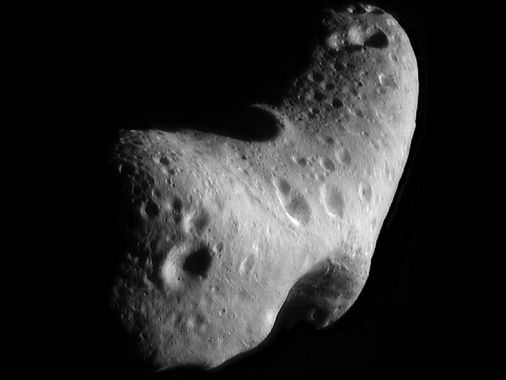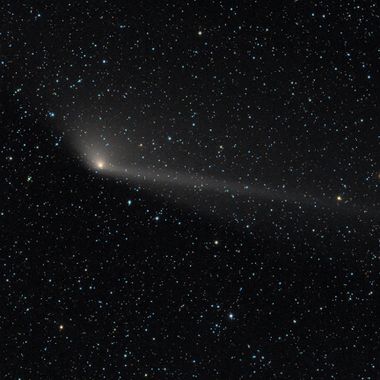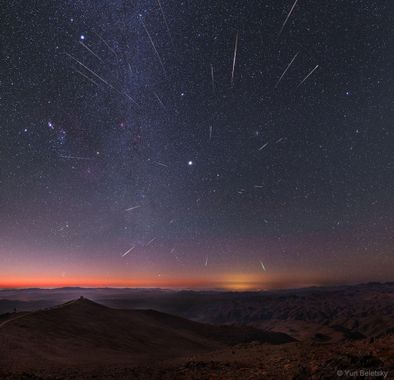
Why Is There Debris In The Galaxy
Space debris results from the various asteroid belts in our galaxy and the collisions within that send large objects in all different directions.
Table of Contents
- Introduction
- Asteroids
- Comets
- Meteors
- Origins Of Debris
- The Asteroid Belt
- The Kuiper Belt
- Summary
- Thanks For Reading
Introduction
When people think of our solar system, they often just think of the planets and larger objects. However, most of our galaxy is made of smaller debris. Debris that forms from collisions and other such processes is very common.
Asteroids

Asteroids are small rocky objects that travel through space and orbit around larger objects. They are smaller than planets. Astronomers sometimes call them planetoids. Their orbits are pretty crazy and eccentric.
Most are pretty small. In fact, most moons that we know of are much larger than asteroids. We refer to asteroids as debris for this reason. Since they are so small on average, their combined mass is not much.
Asteroids are usually discovered by Astronomers searching for larger objects. They are usually searching for planets and things like that. When scanning the sky or watching for transits, asteroids will show up in the most unexpected of places.
Astronomers reportedly first discovered an asteroid a little over 200 years ago. Of course, I am sure we saw them, but observers did not know what they were. I am sure they were mistaken for other things in the sky.
Most asteroids that were discovered are in the famous asteroid belt. Almost all the known asteroids are in this region. It is a belt that orbits the Sun and there are many thousands of asteroids there.
Why are there so many in one region? Most astronomers think they are remnants of an explosion that never formed into a planet. This is because there is far too little mass for them to be a broken up planet. They then escape into the solar system. This happens when they collide with each other and they are responsible for most of the cratering seen around the solar system.
Asteroids are a major source of debris in the galaxy. While not very large, there are a multitude of them. They are also easy to find when you want to look for them.
They are usually denser than comets because of their composition. Asteroids are made of more rocky material.
Comets

Comets are another form of space debris. However, they differ greatly from asteroids. Telescopes from far away can pick them up. Comets are almost always brighter than asteroids. This is because they reflect sunlight. Sunlight is reflected because comets are mostly ice chunks and this makes them highly reflective. This also makes them less dense than asteroids because they contain a lot of water ice.
Comets have highly eccentric orbits. Most of us will only see a particular comet once because of their very long travel period. Orbits can be a hundred years to millions of years.
They have a nucleus, coma, hydrogen envelope, and tail. These attributes can all vary in size. Their characteristics all change, depending on how close to the Sun they are. The nucleus makes up most of their mass. When they get close to the Sun, the envelope and tail form.
Most comets come from the Kuiper Belt and the Oort cloud. These are regions left over from the formation of the galaxy and contain millions, if not billions, of comets. Despite their distance from the Sun and our local galaxy, they are still gravitationally bound by the Sun.
Meteors

Meteors are very common and also known as “shooting stars”. They often appear in our night sky as streaks of light. Friction and the Earth’s atmosphere cause these streaks of light. Friction heats the meteor, and this process emits light.
The smaller meteors are probably pieces of comets that broke apart. As comets get near the Sun, parts break away and these become meteors. Their density is very similar to a comet.
However, the larger meteors that make it to the ground are more similar to asteroids. Their density is much greater. So that tells us something else happened. It could be a stray object from the asteroid belt or a fragment from some collision. It is hard to say for sure.
Origins Of Debris
I mentioned the Kuiper Belt and Asteroid Belt earlier. These regions are where most of our galaxy debris come from. Their objects constantly collide with each other and then shoot off in different directions. This is how everything gets scattered around.
The Asteroid Belt
The Asteroid Belt is the boundary between the inner and outer planets in our galaxy. The asteroids contained within are classified into wet and dry objects. We do not know how this asteroid belt formed exactly. There are a few different theories, of course.
One of the leading theories is that the asteroid belt was leftover from the formation of the Sun. This is certainly plausible. Astronomers think some of our large planets came from this left over material too.
Another theory is that this region just filled up with these planetesimals. This is because it was a region devoid of material and rocky objects slowly got trapped by the Sun as they wandered by.
Both theories are equally plausible. It will take more time and data before a leading theory can emerge.
The Kuiper Belt
The other primary source of debris in the galaxy is the Kuiper belt. This is an extensive region of rocks, asteroids, and comets. It starts around 30 AU from the Sun and it is around 50 AU thick. This means it encircles our solar system, and it is quite large. Like the Asteroid Belt, when collisions occur, objects get sent directly into the solar system.
Also similar to the Asteroid belt, the Kuiper Belt is leftover remnants of the formation of the Solar System. Astronomers think it could have come together to form a planet if Neptune had not interfered with its gravity. Its gravity disrupted the Kuiper Belt so often, so the pieces could never come together.
Astronomers think the Kuiper Belt used to be much larger. Our large gas giants have captured much of the material there. Constant collisions have ejected objects toward the Solar System and the surrounding Oort Cloud. The ejected objects are both asteroids and comets, depending on their makeup.
Many of the objects in the Kuiper Belt are large and have their own moons. We do not know exact numbers, but there are probably thousands of such objects.
Conclusion
In this section, we have talked about the debris in our galaxy and where it came from. Asteroids, comets, and meteors are the major forms of galactic debris, at least by mass. They are also the most interesting to talk about. All these objects get ejected from their original locations and travel throughout the galaxy. Gravity from planets and the Sun direct them in weird trajectories. Some even come close to us, here on Earth.
The principal source of these galactic objects are the Asteroid and Kuiper Belts. These are both regions where multitudes of asteroids, comets, and smaller rocks live. They each have different compositions. This determines what happens to them.
Every so often, they will collide with each and get sent on a path out of their respective belts. We catch glimpses of them as comets, meteor showers, and near collisions with us. As a result, they fascinating to learn about and study.
Thanks For Reading
Thank you for reading this, I really appreciate it.
If you would like to join my newsletter, you can do so here:
If you need a suggestion on what to read next, then try these Astronomy articles:
Why Does The Earth Support Life
Introduction To The Solar System